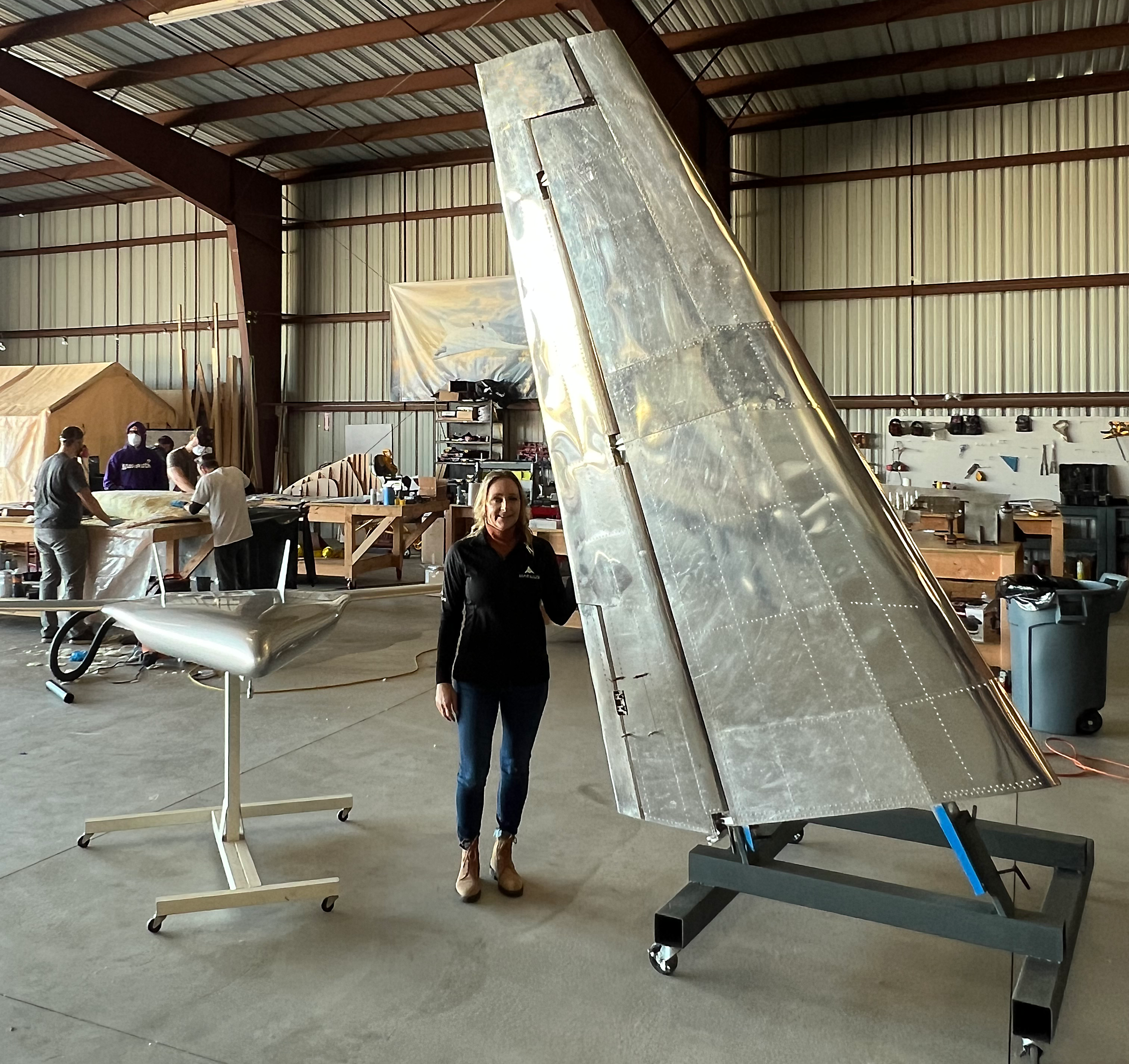
Natilus recently completed assembly of the two vertical tails for its unmanned cargo feeder prototype.
Natilus has signed a conditional purchase agreement with Ameriflight for 20 of its uncrewed regional freighters, marking the first sale of its blended-wing-body (BWB) Kona aircraft to a U.S.-based customer.
As the largest U.S.-based Part 135 operator, Ameriflight ships high-priority freight to and from remote areas across the U.S. on behalf of overnight express carriers like FedEx and UPS. The Dallas-based carrier’s freight services mostly consist of 1-to-2-hr. feeder flights using small aircraft like the Embraer EMB-120, Beechcraft 1900C and Fairchild Swearingen Metroliner. They are all aging platforms ripe for replacement by a more efficient aircraft like the Kona, Natilus CEO Aleksey Matyushev says.
“The way this aircraft was designed is to fly these sort of short-hopper feeder flights of around one to two hours, which is perfect for Ameriflight, although we can go up to six-and-a-half hours flight time,” Matyushev says. “This platform is meant to be a kind of replacement for their fleet, but still introducing new technology like autonomy and the blended wing.”
Matyushev says the Kona’s blended-wing design allows for more cargo volume compared to conventional feeder aircraft, with the ability to carry 12 LD3 or seven LD3-45 containers as part of the aircraft’s 3.8-ton payload. It was also designed for easy loading and unloading of cargo containers and pallets for a seamless integration into carriers’ existing operations, he says.
In addition to enabling larger payloads, the BWB design is also much more fuel efficient, offering a 20% drag reduction which in turn leads to an estimated 50% reduction in CO2 consumption, Matyushev says. In marked contrast to many other UAV startups, the Kona is being designed around a pair of conventional turboprop engines, a decision Matyushev attributed to the lack of range and power density in current-generation electric batteries.
“Electrification is great, but not at the range and payloads we’re talking about,” Matyushev says. “We don’t want to carry one pound of cargo and all batteries. It just doesn’t make a lot of sense; that technology is still not quite there yet for the routes that our customers are most interested in.”
“The 50% fuel consumption reduction from the blended wing body is something that airlines can sink their teeth in today,” he adds. “As battery technology improves or hydrogen comes online, we can start swapping out the powerplants, but we don’t want to bake it in today because we feel it’s going to hinder the product to the point that it wouldn’t be useful to our customers.”
Besides the blended wing, the other main innovation of the Kona is its autonomous flight system. The aircraft is being designed as a remotely piloted UAV, with a licensed drone operator controlling up to three aircraft simultaneously. This would further cut into the vehicle’s operating costs and help relieve pressure on regional carriers struggling amid an industry-wide pilot shortage, Matyushev says.
Nautilus is still manufacturing components and systems for its full-scale prototype, which Matyushev expects to make its first flight in about 26 months. The vehicle’s vertical tails have already been built, and the company has signed major contracts with Pratt & Whitney Canada for the PT6A-67D engines, Janicki for composite structures, and Collins Aerospace for the cargo loading system.





